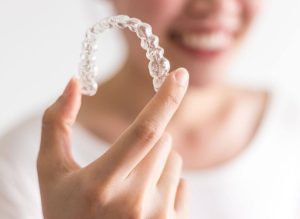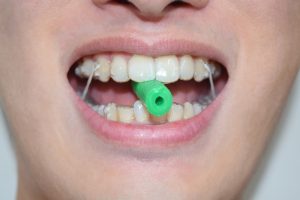Professional Guidance for Clear Aligner Success at Sweet Hart Dental
Your investment in Invisalign treatment deserves proper care and maintenance to achieve optimal results. At Sweet Hart Dental, Dr. Darlene Hart combines her NYU training with years of experience guiding patients through successful clear aligner treatment. Whether you’re just starting your Invisalign journey or looking to improve your aligner care routine, our comprehensive guide helps patients from our surrounding communities of Coral Springs, Davie, and Miramar, FL, maintain their aligners and achieve their dream smiles.
Ready to start or optimize your Invisalign treatment? Contact Dr. Hart at (954) 437-9288 to schedule your consultation at a dental clinic near you.
The Sweet Hart Dental Difference in Invisalign Care

Our practice invests in continuous education, with Dr. Hart regularly attending orthodontic conferences to learn the latest techniques and care protocols. We pass this knowledge directly to our patients through personalized care instructions tailored to individual lifestyles and needs. Our gentle approach makes even anxious patients feel comfortable asking questions and admitting when they’re struggling with compliance.
Essential Daily Care for Your Invisalign Aligners
Maintaining pristine aligners requires consistent daily attention and proper techniques that preserve both clarity and effectiveness:
Morning Cleaning Ritual: Start each day by removing your aligners and rinsing them with lukewarm water. Use a soft-bristled toothbrush designated specifically for aligner cleaning with clear, unscented antibacterial soap. Gently brush all surfaces, including the inside, where bacteria accumulate. This morning routine eliminates overnight bacterial buildup and prevents morning breath associated with aligner wear.
Evening Deep Clean Protocol: Before bed, perform a more thorough cleaning using Invisalign cleaning crystals or denture cleaning tablets designed for clear plastics. Soak aligners for 15-20 minutes while you complete your evening oral hygiene routine. This nightly deep clean removes stubborn buildup and keeps aligners crystal clear.
Midday Maintenance: After lunch or snacks, rinse aligners with cool water before reinserting. When brushing isn’t possible, swish with water before replacing aligners to minimize bacterial transfer. Keep a small bottle of water at your desk or in your bag specifically for aligner rinsing.
Temperature Awareness: Never expose aligners to hot water, dishwashers, or direct sunlight. Heat warps the precisely calibrated plastic, rendering aligners ineffective and potentially requiring expensive replacements. Even leaving aligners in a hot car can cause distortion.
Maximizing Treatment Effectiveness
Success with Invisalign depends on more than just wearing your aligners—it requires strategic habits and commitment:
The 20-22 Hour Rule: Consistent wear time directly correlates with treatment success and timeline. Track your daily wear using smartphone apps or a simple journal. Remove aligners only for:
- Meals and snacks (30-45 minutes per meal)
- Hot beverages like coffee or tea
- Oral hygiene routines (10 minutes morning and evening)
- Special occasions (kept to an absolute minimum)
Aligner Switching Strategy: Change to new aligners before bedtime to sleep through the initial adjustment period. This timing minimizes daytime discomfort and allows you to wake up with aligners that already feel more comfortable.
Attachment Preservation: If your treatment includes attachments (small tooth-colored bumps), protect them by inserting and removing aligners carefully. Start removal from the back molars, gently working forward to prevent attachment damage.
Progress Documentation: Take weekly photos to track your smile transformation. These images motivate continued compliance and help Dr. Hart assess progress between visits.
Lifestyle Integration Strategies
Incorporating Invisalign care into your daily routine requires planning but becomes second nature with practice:
 Professional Life Management:
Professional Life Management:
- Keep a discreet care kit in your office drawer with a toothbrush, toothpaste, floss, and an aligner case
- Schedule important presentations or meetings, considering aligner switching days when speech might be slightly affected
- Use lunch breaks for thorough midday oral hygiene rather than rushed cleaning
Social Situation Navigation:
- Plan aligner removal for meals at restaurants, storing them safely in their case—never in napkins
- For cocktail parties or wine tastings, remove aligners to prevent staining and sugar exposure
- Keep previous aligners accessible for emergencies if current ones are forgotten
Travel Preparedness:
- Pack extra aligner cases in different bags to prevent total loss
- Bring sufficient cleaning supplies for your entire trip
- Carry your previous and next set of aligners for flexibility
- Store Dr. Hart’s contact information for questions while away
Common Mistakes That Derail Treatment
Avoiding these frequent errors keeps your treatment on track and prevents complications:
- Improper Cleaning Products: Using toothpaste, mouthwash, or colored soaps clouds aligners and creates micro-scratches where bacteria thrive. Stick to clear, unscented soap or official cleaning products.
- Inconsistent Wear Patterns: Removing aligners for “just a few hours” for an event delays treatment and can cause aligners to feel tight when reinserted. Teeth begin shifting back within hours of aligner removal.
- Eating with Aligners: Even “soft” foods can damage aligners and trap sugars against teeth. The pressure from chewing can crack or distort the precise fit needed for effective treatment.
- Neglecting Oral Hygiene: Failing to brush after meals before reinserting aligners traps food particles and bacteria, increasing cavity risk significantly. Aligners create a closed environment where bacteria flourish without proper hygiene.
- Improper Storage: Wrapping aligners in tissues or leaving them exposed leads to loss or contamination. Dogs are particularly attracted to the scent and will chew on aligners if accessible.
Advanced Care Techniques for Optimal Results
Dr. Hart recommends these professional-level strategies for exceptional treatment outcomes:
Chewies Utilization: Use Invisalign chewies (small cylindrical cushions) for five to 10 minutes after inserting aligners to ensure complete seating. This practice improves aligner fit and treatment efficiency.
- Strategic Aligner Removal: Master the proper removal technique, starting from the inside back molars, alternating sides to prevent aligner distortion. Never pull from the front teeth only.
- Whitening Coordination: Discuss teeth whitening timing with Dr. Hart. Some patients benefit from whitening during treatment using aligners as whitening trays, while others should wait until completion.
- Retainer Preparation: Begin establishing retainer wear habits before treatment ends. The discipline developed during active treatment translates to successful long-term retention.
Troubleshooting Common Invisalign Challenges
When issues arise, quick resolution prevents treatment delays:
- Aligner Discomfort: Mild pressure indicates proper function, but persistent pain warrants attention. Use orthodontic wax on rough edges and over-the-counter pain relievers for switching discomfort. Contact our office if pain persists beyond three to four days.
- Speech Adjustments: Practice reading aloud for 15-20 minutes daily during initial adjustment. Focus on ‘S’ and ‘TH’ sounds, which require the most adaptation. Most patients report normal speech within one week.
- Tracking Issues: If aligners feel loose or don’t fit properly, contact Sweet Hart Dental immediately. Poor tracking can derail treatment timing. Never skip ahead to the next aligner without Dr. Hart’s approval.
- Staining Concerns: Despite careful maintenance, some aligners may develop slight discoloration. Since you switch aligners regularly, minor staining won’t impact treatment. Focus on preventing stains through proper care rather than aggressive cleaning that might damage aligners.
Professional Monitoring and Support

- Progress Assessments: Every six to eight weeks, Dr. Hart evaluates tooth movement and aligner fit
- Attachment Monitoring: We check attachment integrity and replace any that become damaged
- Bite Refinement: Adjustments to your treatment plan address any unexpected tooth movements
- Cleaning Demonstrations: Our team provides hands-on guidance for any care challenges
Call (954) 437-9288 to schedule your next Invisalign check-up or address any concerns about your treatment.
Your Invisalign Success Starts with Proper Care
Achieving your perfect smile with Invisalign requires partnership between you and Sweet Hart Dental. Dr. Hart’s expertise, combined with your commitment to proper aligner care, creates the formula for stunning results. Our patients from Pembroke Pines, Coral Springs, Davie, and Miramar, FL consistently achieve their smile goals through dedicated maintenance and our professional support.
Take the first step toward your confident new smile. Contact Sweet Hart Dental at (954) 437-9288 to schedule your Invisalign consultation with Dr. Hart. Whether you’re beginning treatment or need guidance on current aligner care, our Pembroke Pines dental team is here for you every step of the way.

 Professional Life Management:
Professional Life Management: Chewies Utilization: Use
Chewies Utilization: Use